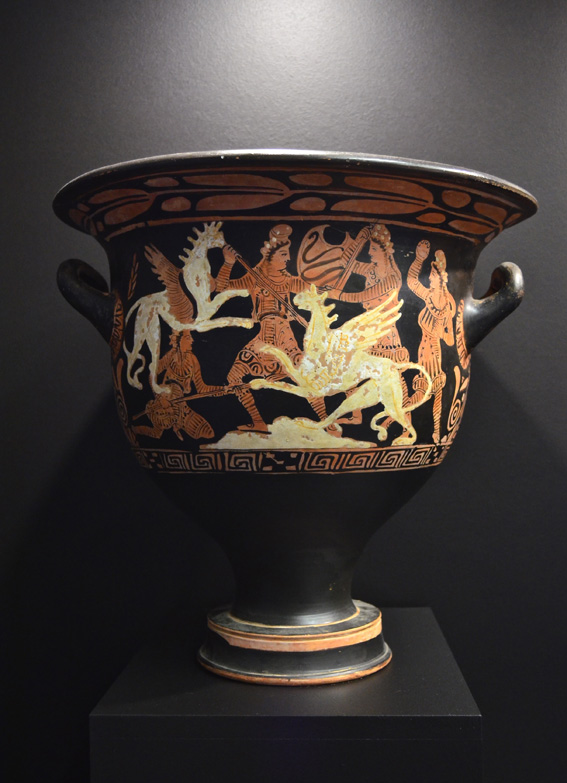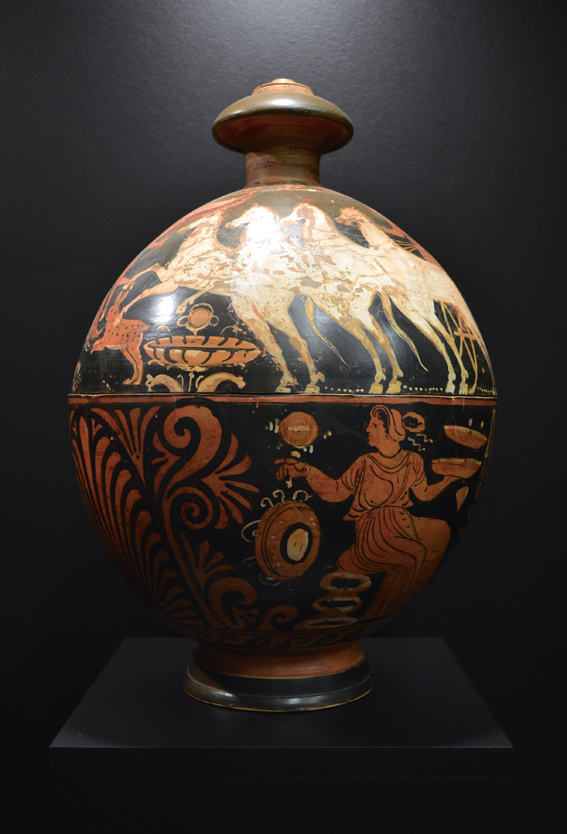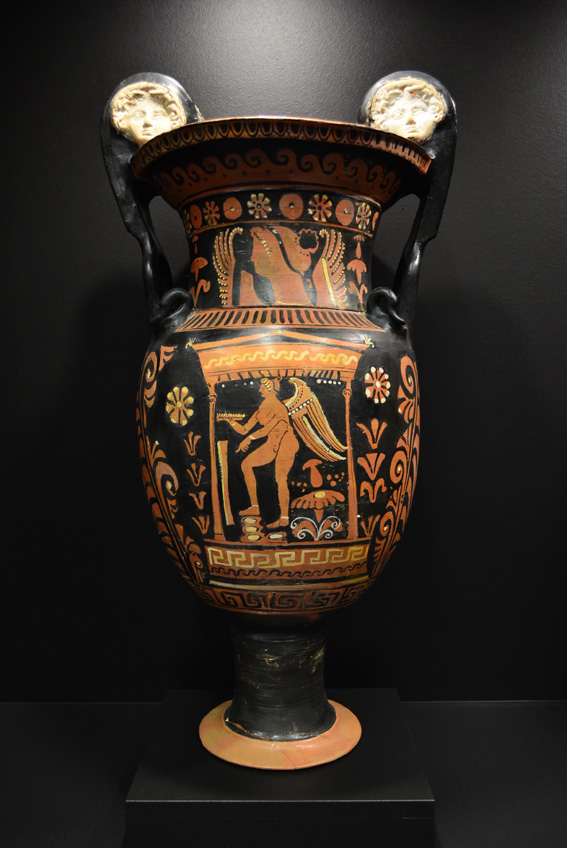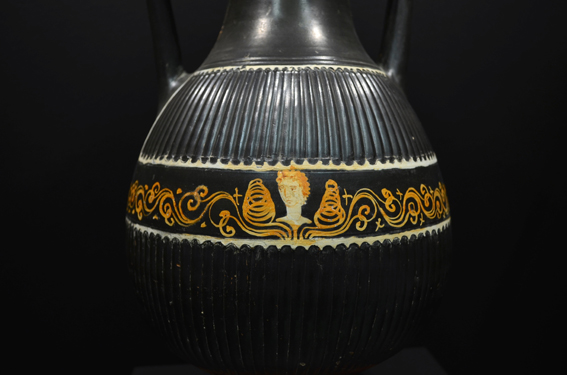For nearly 300 years, Greek cities along the coast of southern Italy and Sicily imported their pottery from Corinth and Athens.
By the late fifth century, however, they began producing their own vessels.

By the end of the fifth century BCE the Attic imports ceased, partly due to Athens’ struggle to recover from the Peloponnesian War, which ended in 404 BCE.
The red-figure vases produced by Greek settlers in South Italy and Sicily were at first closely modelled on Athenian prototypes. But they quickly evolved, exhibiting distinctive individual styles and characteristics.

South Italian wares, unlike Attic, were not widely exported. Much of the vessels produced were made specifically for the local market and reflect the tastes and interests of the region. The regional schools of South Italian vase painting – Apulian, Lucanian, Campanian, Paestan and Sicilian – flourished between 440 and 300 BCE. Vessels from each region have their own distinct features, including shape and decoration that make them identifiable even when their provenance is unknown.
Clay from the South Italian region shows much greater variation in colour and texture when fired than that found in Attic pottery. The peoples of South Italy also held a distinct preference for adding colour to their vase painting, in particular white, yellow and red. The compositions of painted scenes also tend to be more grandiose and complex than their Attic counterparts.

South Italian vase painters had a particular fondness for elaborate mythological and theatrical scenes. These scenes were most likely inspired by actual dramatic performances. In some instances, South Italian vases provide illustrations of tragedies whose surviving texts are fragmentary or entirely lost. In contrast, the Athenians rarely depicted theatrical scenes on their vases making South Italian invaluable to our understanding of ancient theatre and the evolution of Greek mythological stories.
Many of the vases are of great interest and importance as they shed light on local customs and relations between the Greek settlers and the indigenous populations od South Italy. In fact, many of the vases were made for the indigenous inhabitants who seem to have acquired considerable wealth and a preference for large, elaborately decorated vases.
A number of vases from the region are on display at the Hellenic Museum as part of the exhibition Beyond Attica: the Art of Magna Graecia, on loan from the Koumantatakis Family.













